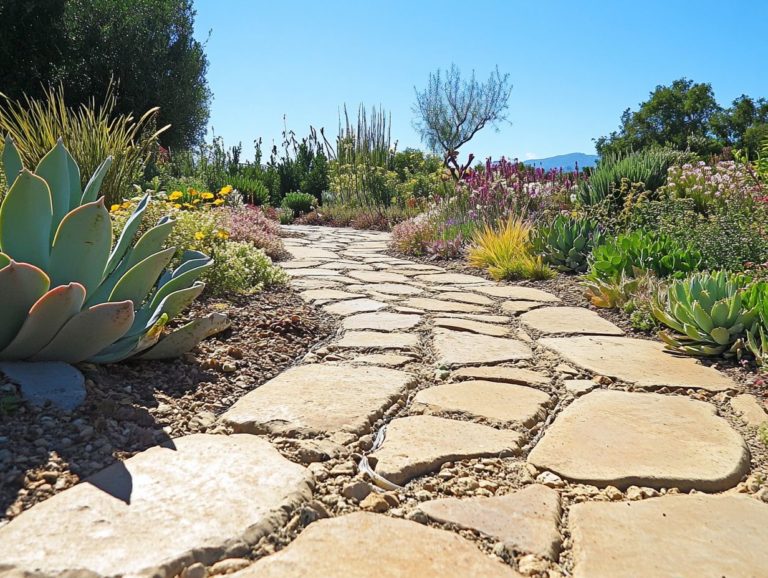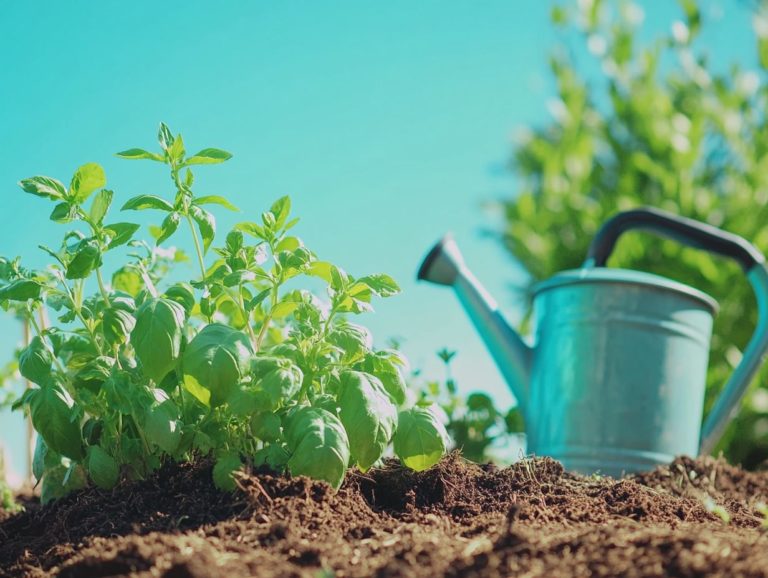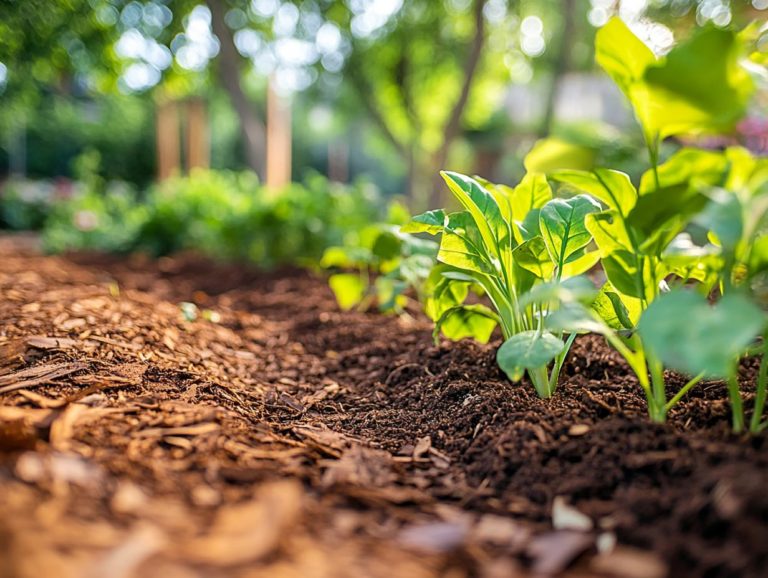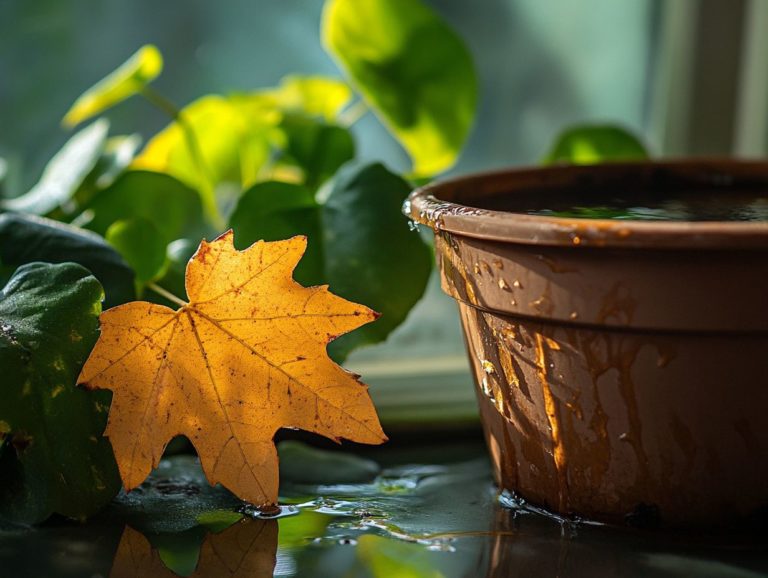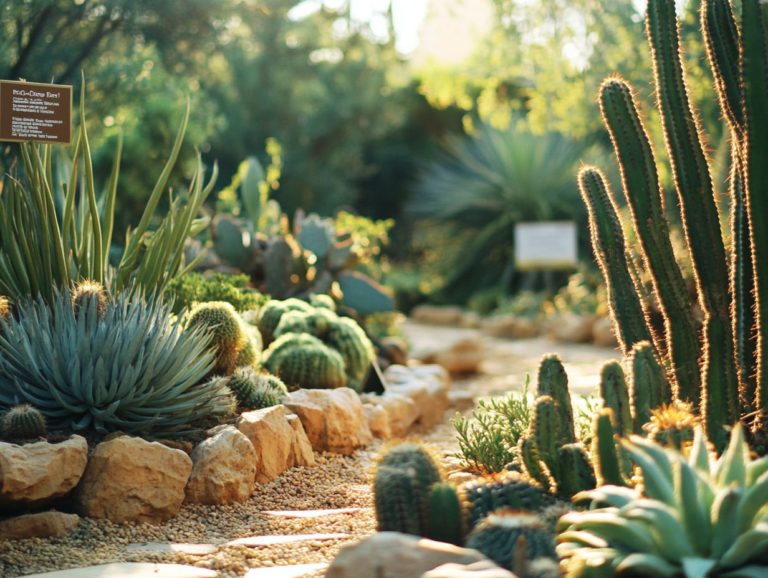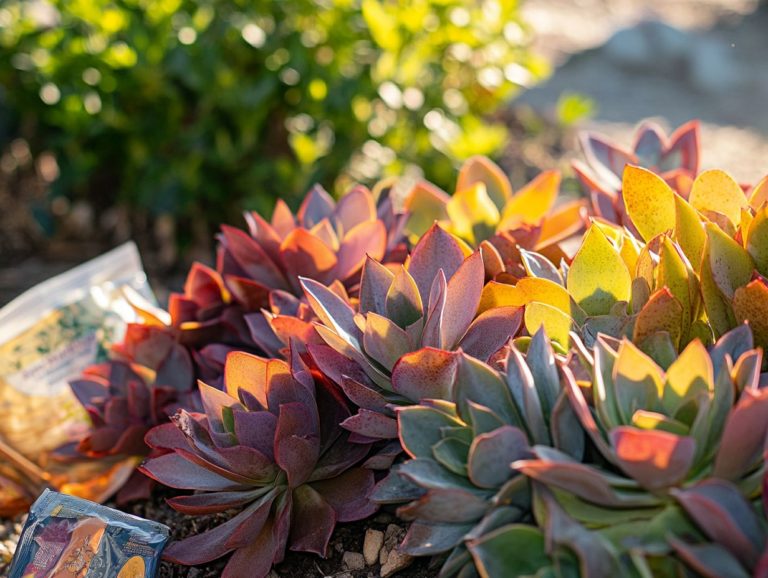How to Create Habitat for Wildlife in Drought Areas?
Drought is becoming an increasingly pressing issue that profoundly affects wildlife and their homes. As water sources diminish, many species face significant struggles, battling to secure food, shelter, and other essential resources.
This article delves into the ramifications of drought on wildlife and highlights strategies for creating suitable habitats while providing effective water conservation techniques for garden wildlife.
You can make a real difference with your actions right now! Discover how to attract and support wildlife during these challenging times, emphasizing the importance of teaming up with local organizations and experts. Dive into this exploration of vital steps designed to help wildlife thrive, even in dry areas.
Contents
- Key Takeaways:
- What You Need to Know About Drought and Wildlife
- How to Create Safe Spaces for Wildlife
- Conserving Water for Wildlife
- Attracting and Supporting Wildlife in Drought Areas
- Collaborating with Local Organizations and Experts
- Frequently Asked Questions
- How can I create habitat for wildlife in drought areas?
- What types of plants should I include in my drought-friendly wildlife habitat?
- How can I make my drought habitat more inviting for wildlife?
- Are there any specific species of wildlife that are more likely to thrive in a drought habitat?
- Can I create a drought habitat in my small backyard?
- What are some other ways to support wildlife in drought areas besides creating a habitat?
Key Takeaways:
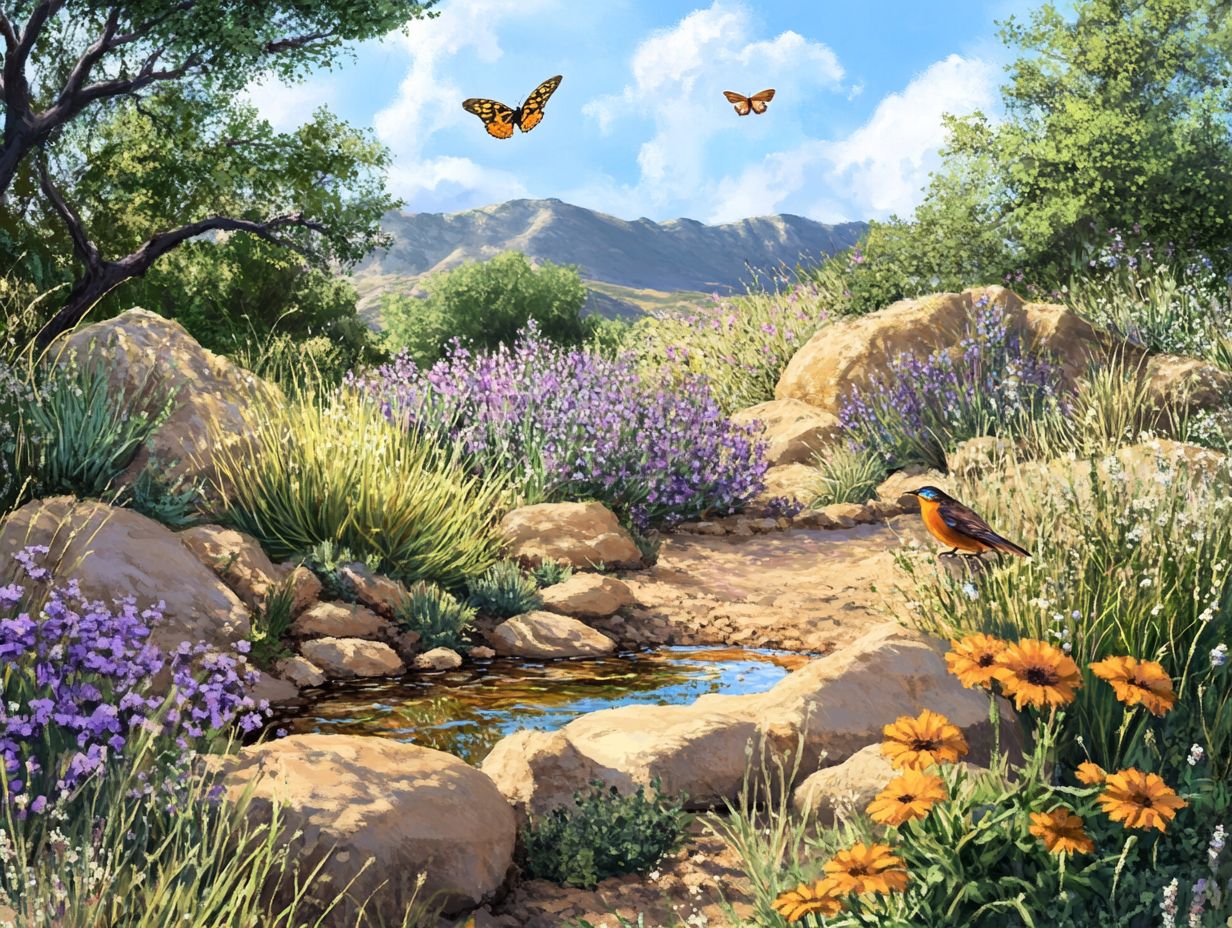
- Discover the impact of drought on wildlife.
- Learn how to create safe homes for wildlife.
- Team up with local groups to support wildlife.
What You Need to Know About Drought and Wildlife
Understanding drought is essential for wildlife conservation, as it profoundly impacts homes, food availability, and the overall variety of life in local ecosystems.
When drought conditions arise, water and food become scarce, directly threatening the survival of various species, including birds, bees, and butterflies. Wildlife struggling to find adequate shelter and suitable places to raise their young underscores the urgent need for sustainable practices in conservation efforts.
What is Drought and How Does it Affect Wildlife?
Drought is characterized by an extended period of abnormally low rainfall, leading to a critical water shortage that can profoundly affect wildlife and their homes.
This situation can be caused by many things, including climate change, deforestation, and the over-extraction of water resources. As these dry spells linger, they can cause significant habitat degradation, with vegetation struggling to thrive amidst insufficient moisture. The resulting loss of plant life triggers a ripple effect, reducing food sources for herbivores and, consequently, impacting the predators that depend on them.
Water scarcity, also exacerbated by rising temperatures, introduces additional challenges for wildlife. Animals are compelled to migrate in search of sustenance, which often leads to conflicts with human populations and places further strain on ecosystems that are already under pressure.
How to Create Safe Spaces for Wildlife
Creating safe spaces for wildlife in drought-affected areas demands a multifaceted approach that combines sustainable practices. Consider how to create a sustainable drought garden by planting native plants, enhancing soil health, and implementing wildlife-friendly improvements. This holistic strategy not only preserves existing ecosystems but also strengthens the resilience of local wildlife in the face of climate change.
By focusing on habitat restoration and tailored gardening techniques, you can cultivate thriving mini-ecosystems that support a rich diversity of wildlife.
Identifying and Addressing Specific Needs
Identifying and addressing the specific needs of wildlife in drought-stricken areas is crucial for effective habitat restoration and support, including understanding how to create a drought-tolerant garden.
To foster a thriving ecosystem, you must consider the diverse needs of various species. This includes providing food sources, such as nectar-rich plants for pollinators and nutritious vegetation for herbivores.
Accessible water features, like bird baths and small ponds, can greatly enhance the survival of fragile populations. Additionally, understanding how to design a drought-resistant landscape is equally important; by creating spaces with dense vegetation or natural cover, you offer wildlife protection from harsh conditions.
By prioritizing these essential elements, you play a vital role in restoring balance to vulnerable habitats, ensuring that both flora and fauna can flourish even in challenging environments.
Conserving Water for Wildlife
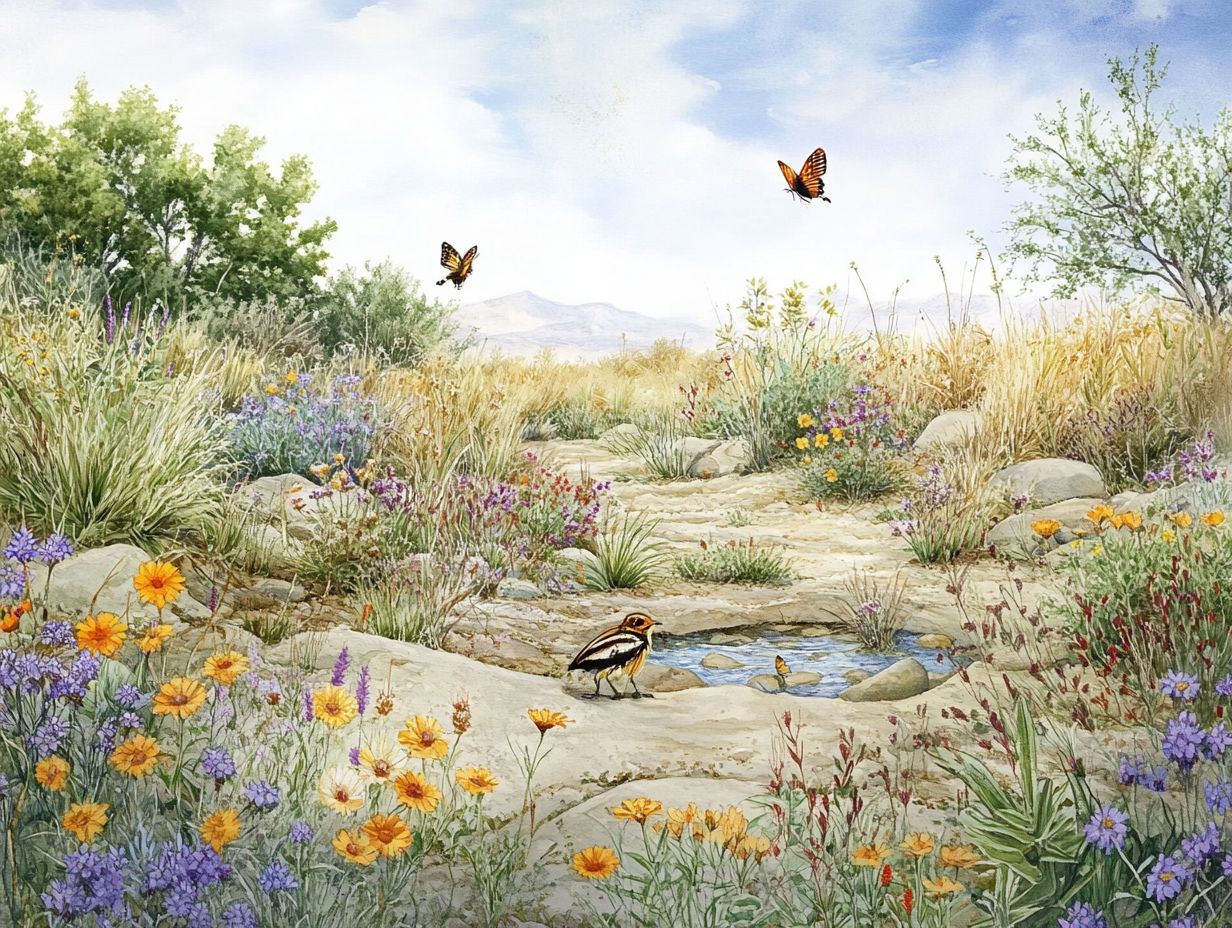
Conserving water for wildlife is crucial for helping the environment, especially in drought-prone regions where water scarcity threatens local ecosystems and wildlife diversity.
Embracing efficient water conservation strategies like drip irrigation (a method that delivers water directly to plant roots) and composting enhances soil health, promotes plant growth, and secures sustainable food sources for wildlife.
By prioritizing water conservation, you can help maintain the delicate balance within ecosystems, ensuring a thriving habitat for all forms of life.
Effective Water Conservation Strategies
Effective water conservation strategies are essential for creating vibrant homes for wildlife, particularly in drought-affected areas.
By adopting techniques like rainwater harvesting, you can collect and store valuable rainfall. This creates a sustainable water source that nourishes both plants and local fauna.
Implementing drip irrigation systems allows for efficient water delivery directly to plant roots, minimizing waste while promoting lush growth.
Engaging in eco-friendly practices helps enrich the soil and retain moisture, creating a welcoming environment for beneficial insects and small animals. These interconnected methods boost the health of your garden and contribute to the sustainability of local ecosystems, cultivating a thriving habitat for diverse wildlife.
Attracting and Supporting Wildlife in Drought Areas
Attracting and supporting wildlife in drought-stricken areas is achievable by implementing thoughtfully designed wildlife-friendly enhancements and integrating wildlife habitats in drought gardens with drought-tolerant vegetation into your garden.
Selecting specific plant varieties, such as pollinator plants and native species, creates inviting habitats that offer essential food and shelter for local wildlife, including birds, bees, and butterflies.
This approach not only improves the aesthetic appeal of your garden but also opens up delightful opportunities for wildlife observation.
Planting Drought-Tolerant Vegetation
Planting drought-tolerant vegetation is essential for supporting wildlife in arid regions, as these plants are adapted to thrive with minimal water.
Incorporating native plants into your urban landscape conserves water and fosters a flourishing ecosystem that attracts vital pollinators and beneficial insects.
Species like lavender, sage, and yarrow require less hydration and provide habitats for various pollinators, including bees and butterflies.
These plants are crucial for healthy pollination processes that are critical for plant reproduction.
Establishing native pollinator gardens filled with drought-tolerant varieties significantly enhances urban wildlife habitats, ensuring a vibrant and balanced ecosystem that supports both flora and fauna.
Providing Shelter and Food Sources
Providing adequate shelter and food sources is vital for attracting and supporting wildlife in drought-affected areas, including essential places to raise young. Creating a rain garden can also enhance these habitats; learn more about how to create a rain garden for drought-prone areas.
Creating diverse habitats enhances ecological balance and offers vital refuge for various species.
For example, birdhouses can serve as safe nesting sites for birds, while brush piles provide essential cover for small mammals and insects.
Incorporating native plants that thrive in your local conditions attracts beneficial pollinators like bees and butterflies, reinforcing the importance of nature conservation.
Effective food sources, such as bird feeders filled with seeds and nectar-rich flowers, play a key role in sustaining these wildlife visitors throughout the seasons.
Together, these elements contribute significantly to a thriving, wildlife-friendly garden that supports biodiversity, even in challenging climates.
Join us in making a difference for wildlife today! Start implementing these strategies in your own garden and contribute to a healthier ecosystem.
Collaborating with Local Organizations and Experts
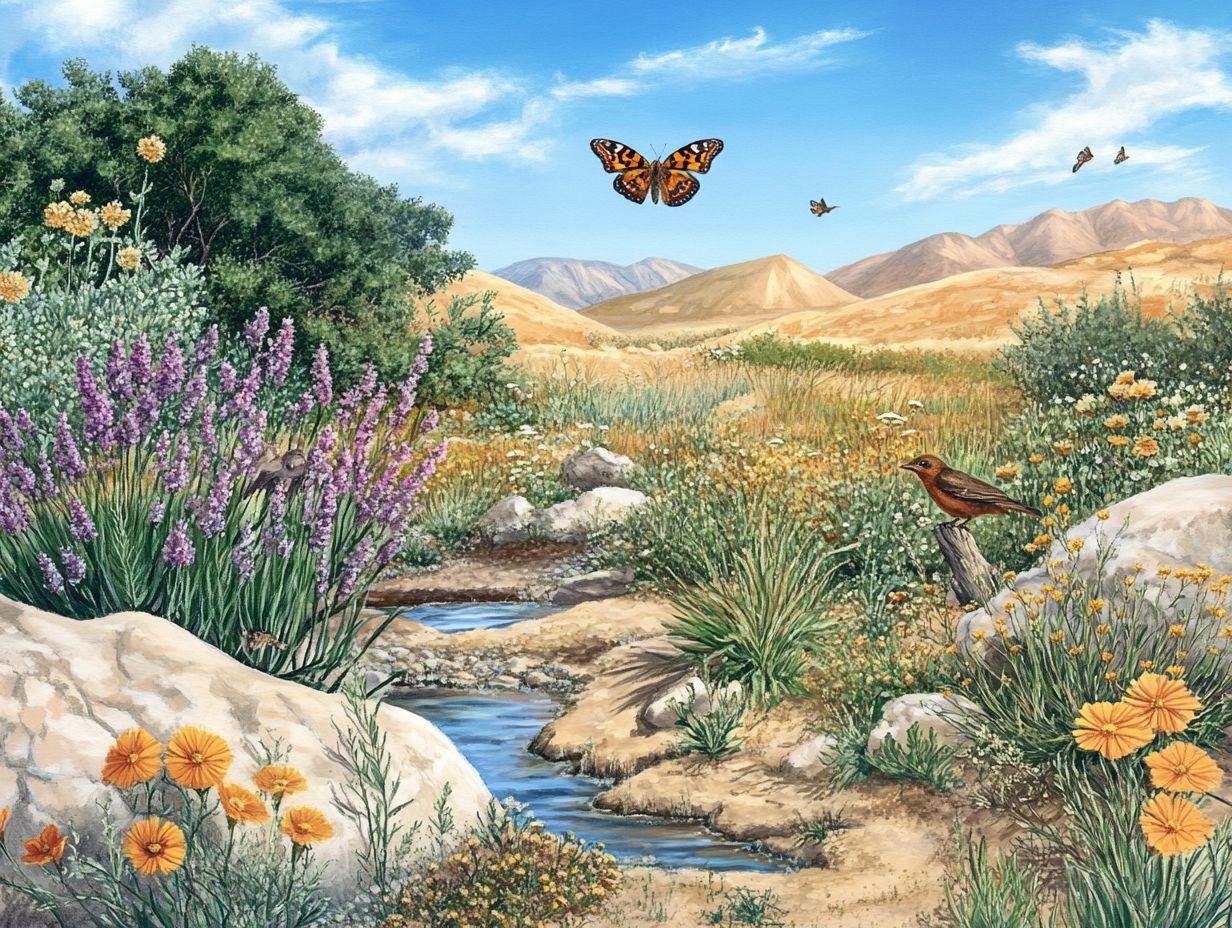
Collaborating with local organizations and experts is important for your wildlife conservation efforts, especially when facing challenges posed by drought.
Organizations like the National Wildlife Federation offer very useful resources, certification checklists, and expertise. They help you and fellow conservationists create habitats that truly support wildlife.
Partnering with these groups allows you to implement best practices. This secures local ecosystems’ sustainability and enhances your impact.
Partnering with Conservation Groups
Partnering with conservation groups presents a unique opportunity to enhance wildlife habitats. You can access invaluable resources for implementing wildlife-friendly improvements.
These organizations lead initiatives for urban wildlife conservation and habitat certification. They guide communities through certification programs that promote biodiversity and reduce ecological footprints.
By collaborating with these groups, you can contribute to preserving local flora, fauna, and edible plants. You ll gain insights into best practices for creating wildlife-friendly spaces and shelter for wildlife right in your own backyard.
Through workshops, volunteer opportunities, and educational resources, you ll develop skills to advocate for and support these important conservation efforts. This ultimately fosters healthier ecosystems and green spaces in urban areas.
Seeking Advice from Wildlife Experts
Seeking advice from wildlife experts and the National Wildlife Federation can provide you with valuable insights into effective gardening practices that support local wildlife, especially during drought conditions and urban gardening.
By tapping into their specialized knowledge in gardening practices, you can receive tailored recommendations. These may include choosing native plants that thrive in arid environments and provide essential resources for local fauna.
These experts can guide you in making habitat improvements like planting for wildlife. This ensures your garden flourishes while becoming part of broader conservation efforts.
Engaging with seasoned professionals enhances the aesthetic appeal through landscape design of your garden. It fosters a deeper connection to nature, promoting ecological balance and soil conservation, while encouraging biodiversity within your community landscapes.
Frequently Asked Questions
Here are some common questions about creating habitats for wildlife in drought areas:
How can I create habitat for wildlife in drought areas?
One way to create habitat for wildlife in drought areas is to provide a consistent water source, such as a birdbath or pond, for animals to drink from. Additionally, exploring how to create a wildlife-friendly drought garden can enhance biodiversity in your landscape.
What types of plants should I include in my drought-friendly wildlife habitat?
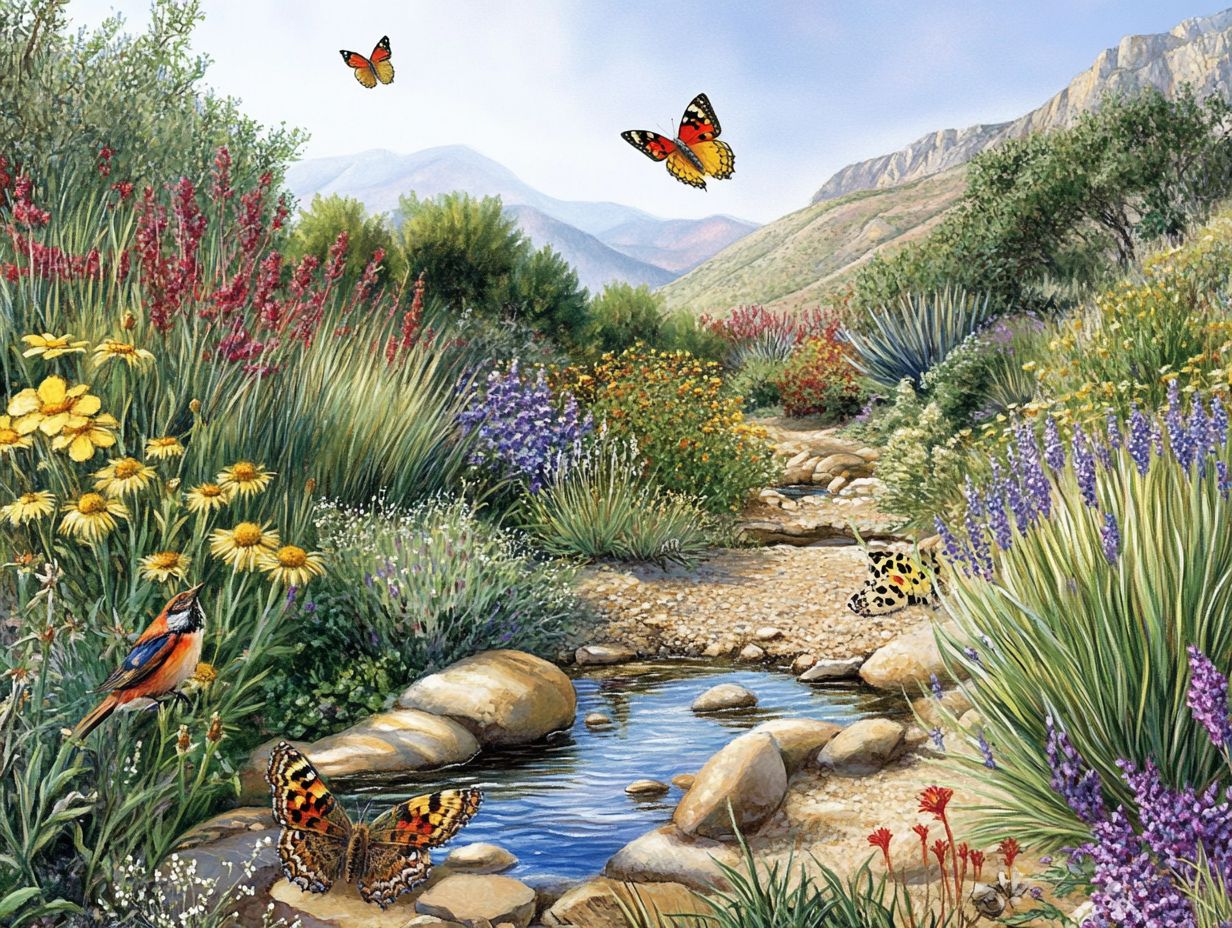
When planning your habitat, choose native plants adapted to the local climate that require minimal watering. These can include cacti, succulents, and other drought-tolerant species.
How can I make my drought habitat more inviting for wildlife?
Adding features such as bird feeders, butterfly gardens, and nesting boxes can make your habitat more attractive to various types of wildlife.
Are there any specific species of wildlife that are more likely to thrive in a drought habitat?
Some species well-adapted to living in drought conditions include lizards, desert tortoises, and certain species of birds and insects. Researching the native wildlife in your area can help you tailor your habitat to their needs.
Can I create a drought habitat in my small backyard?
Yes! Even small outdoor spaces can be transformed into drought-friendly habitats for wildlife. Utilize vertical gardening techniques, container plants, and other space-saving methods to create a diverse and welcoming environment.
What are some other ways to support wildlife in drought areas besides creating a habitat?
You can support wildlife during droughts by providing food and water in shaded areas. Additionally, stopping the use of pesticides and promoting biodiversity in drought gardens by creating shelter from extreme heat are also crucial.
Conserving water at home is essential. This simple action can greatly benefit wildlife in drought areas.

